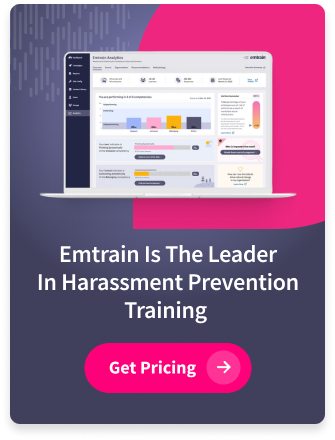Inclusion and respect go hand in hand.
Strong social connections, understanding our co-workers, and how different people perceive different situations are keys to inclusion, but they’re also keys to respect.
Let’s start with inclusion. People need to feel understood in order to connect and form strong social bonds. When we have strong relationships, it’s easier to let down our guard (and stop code-switching) and be our authentic selves. And the more that we can be our authentic selves and create strong relationships with co-workers, the more included and connected we feel. It’s a virtuous cycle: feeling understood builds connections and allows others to feel more included.
Know Your Audience, and Adapt
Now let’s go to respect. Inclusion affects respect in two ways. First, people view situations and comments differently, meaning some comments or situations may appear appropriate for some but rude and disrespectful to others. For example, some may welcome direct feedback on performance, while others may perceive that style as abrasive and harsh.
Knowing your audience is key to adjusting your style to fit the specific needs of your co-workers. If you don’t know your audience, you may unintentionally act in a way that a co-worker may find annoying or disrespectful. However, the more we understand each other and our co-workers, the more we will naturally adjust our style to show respect, creating an environment that fosters respect and inclusion.
Second, relationships are the buffer that allows people to get over petty slights, insults, and perceived disrespect. No one is perfect, and all of us say or do things (from time to time) that are thoughtless and may show up as rude or disrespectful to another co-worker.
Give Your Employees the Benefit of the Doubt
When we have a strong relationship, we will often give someone the benefit of the doubt and assume good intent. When we don’t have a strong relationship, we assume bad intent and focus on the actions causing disrespect. There’s more workforce friction when we presume intent and a higher probability of people feeling harassment and bias against them.
So, investing in talent strategies that build more inclusion will automatically generate more respect at the same time. Because the more included we feel, the more we adjust our actions to meet the needs of our co-workers and create stronger relationships that act as a buffer to perceived disrespect.
Measure Respect and Inclusion
Emtrain trains employees on the skills and behaviors to grow Respect and Inclusion, and scores, measures, and benchmarks organizations on a series of related indicators. Our ongoing research on Workplace Social Indicators™ shows that Respect and Inclusion are core organizational competencies in creating a healthy workplace culture and that they are interconnected in significant ways.
See how Emtrain measures Respect and Inclusion and how you can generate a scorecard for your organization to identify the areas of improvement. Contact us for your free demo today!








